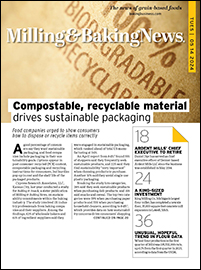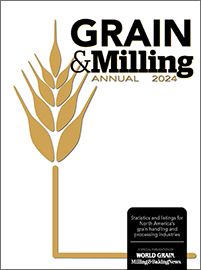Sheeted pizza lines naturally create trim dough as the circles are cut out of rectangular sheets, but there are several ways that trim can be used or reduced.
First is determining where the dough gets reintroduced into the process, said Nick Magistrelli, vice president of sales, Rademaker USA.
“Once that has been determined, then the baker and equipment vendor can work together to design a solution that fits the needs of the product quality and the culture,” he said.
Rework dough can be fed back into the process at the beginning of the Impressa pizza line, said Randy Kelly, applications specialist, Fritsch, a Multivac Group company.
“This would provide reduction of waste as well as improve the taste of the final product from the time the dough has rested before being reintroduced to the line.”
Consistent running is the best way to control and minimize trim and waste, said John McIsaac, vice president of strategic business development, Reiser.
“The trim that is gathered can be reintroduced into the process by transporting and metering it back to the mixer,” he said. “A Vemag is often used as a collection point. We then meter and transport the dough.”
Rondo offers several dough band formers, or extruders, to fit the pizza application, depending on the dough’s hydration and proofing condition and widths to minimize side trim, said Compton Callender, North American technical manager, Rondo.
“Rondo also offers conveyors with scaling units to collect, weigh and precisely return trim dough to the mixing area,” he added. “Automatic trim return allows for labor and material savings and more product consistency.”
This article is an excerpt from the November 2024 issue of Baking & Snack. To read the entire feature on Pizza Processing, click here.






